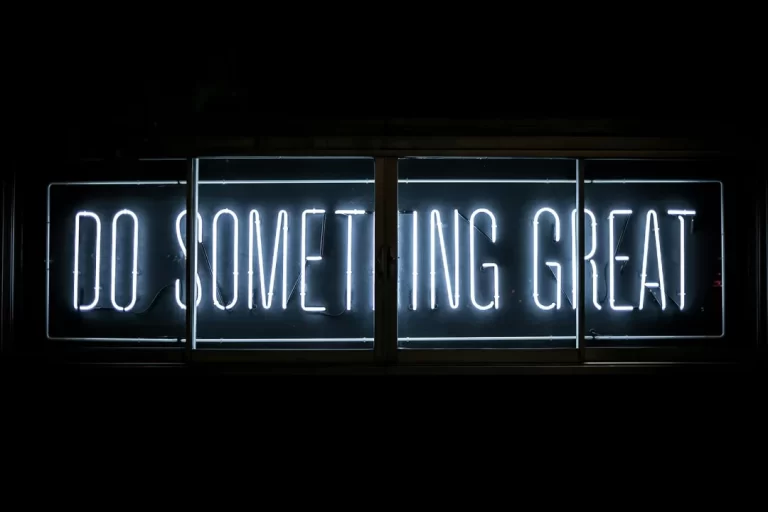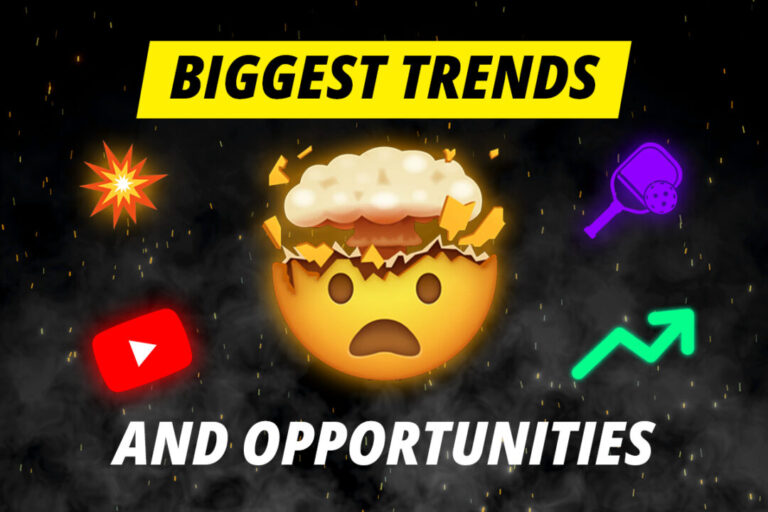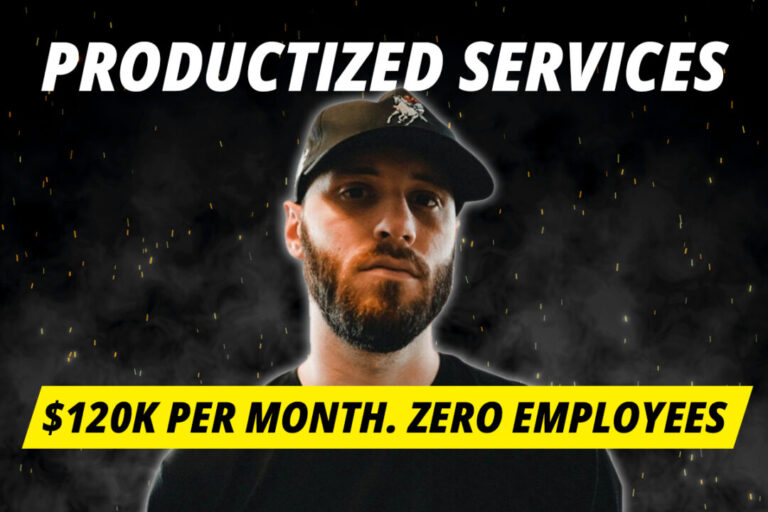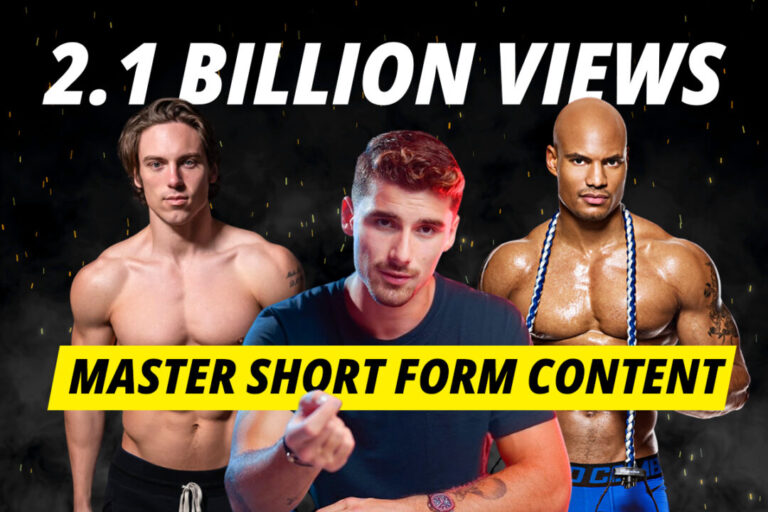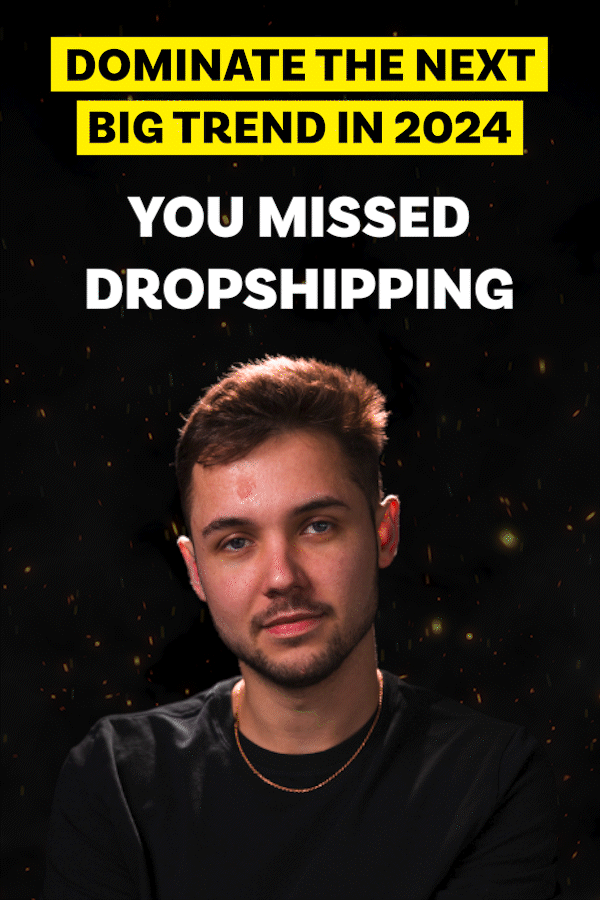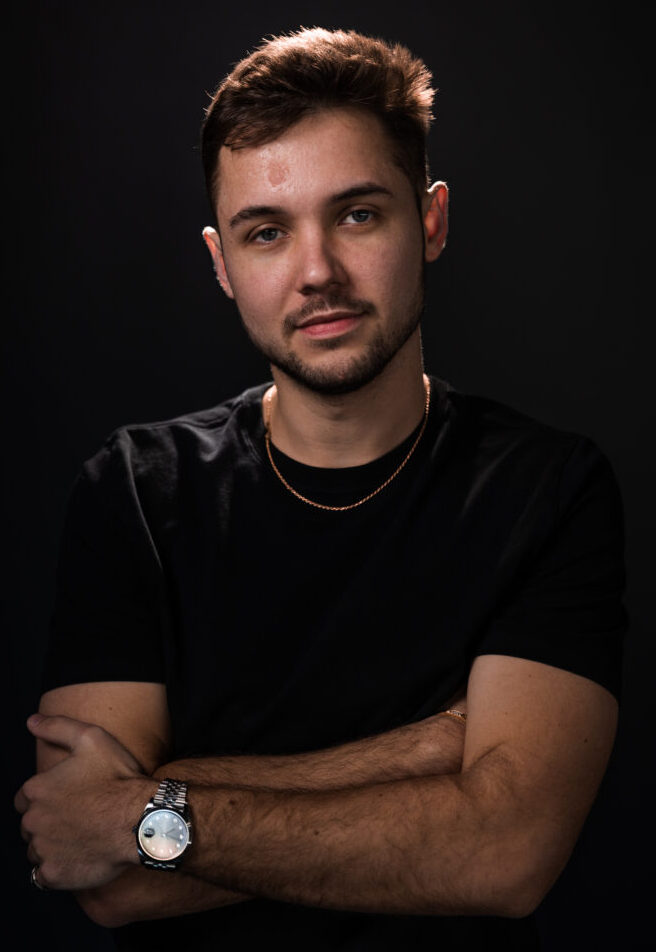In this article, you’ll learn powerful insights from the most successful content creators in the business. You’ll learn when to post, how often to post it, and how to create so much content your competitors will wonder how you manage it.
What content should I post?
What platforms should I post on?
How often should I post?
How do I make so much content?
If you’re a content creator, you’ve undoubtedly asked yourself these exact questions.
You need a digital content strategy
Creating an effective content strategy is hard. Yet it’s the difference between those who succeed and those who don’t.
Ask any successful content creator what the most important thing is to grow online, and they’ll say one thing: consistency.
Justin Welsh has posted on LinkedIn for more than 1,000 days in a row. He’s posted on Twitter for more than 500 days in a row. Consequently, he’s got over 400,000 followers on each platform.
The key to staying consistent? An effective content strategy.
It’s impossible to stay consistent if you’re constantly trying to figure out what you should post and when you should post it.
You need a strict schedule, and you need to stick to it.
How do I create a digital content strategy?
I spent 4 days researching to create the optimal content strategy for WGMI Media (the blog you’re reading right now).
I analyzed every angle piece of content from 5 multi-million dollar creators over the last few months.
From this research, I uncovered three extremely powerful insights that helped us grow our Instagram to 200k+ and our newsletter to 80k+ in just a few months.
FYI: To discover the optimal content strategy, I analyzed Sahil Bloom, Dan Koe, Alex Hormozi, Justin Welsh and Ed Mylett. I chose these creators because each of them has seen tremendous growth over the last 12 months. That indicates to me that they are dialed into the content strategies that are working right now.
Insight 1: Volume is extremely important
Each of the 5 content creators I studied produces a lot of content. Here are the exact numbers…
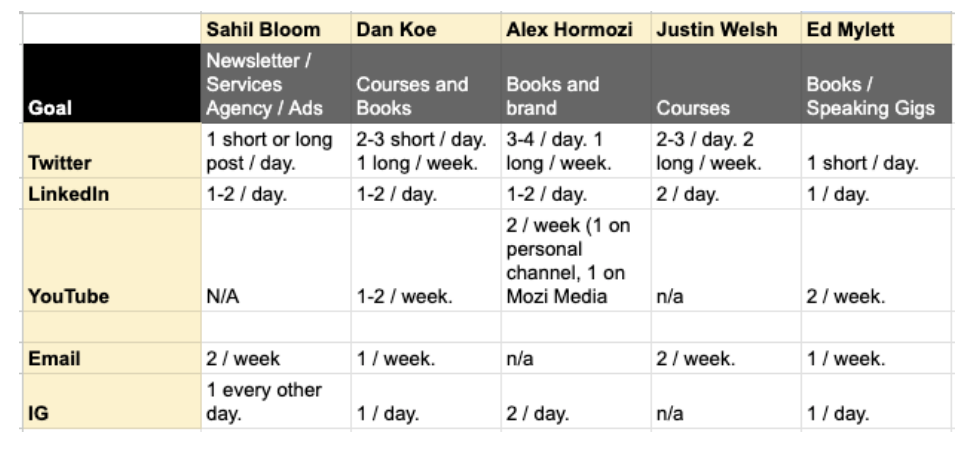
Let’s break that down by each platform.
How often should I post on Twitter?
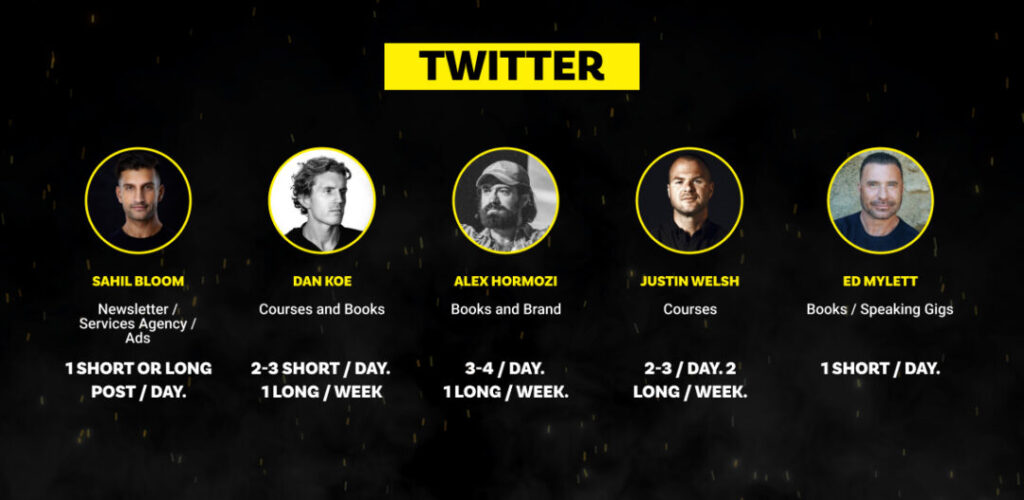
If you want to replicate the success of the biggest accounts on Twitter, posting regularly is key. Aim for at least 2-3 short-form (less than 280 characters) posts per day and 1-2 long-form (more than 280 characters) posts per week.
How often should I post on LinkedIn?
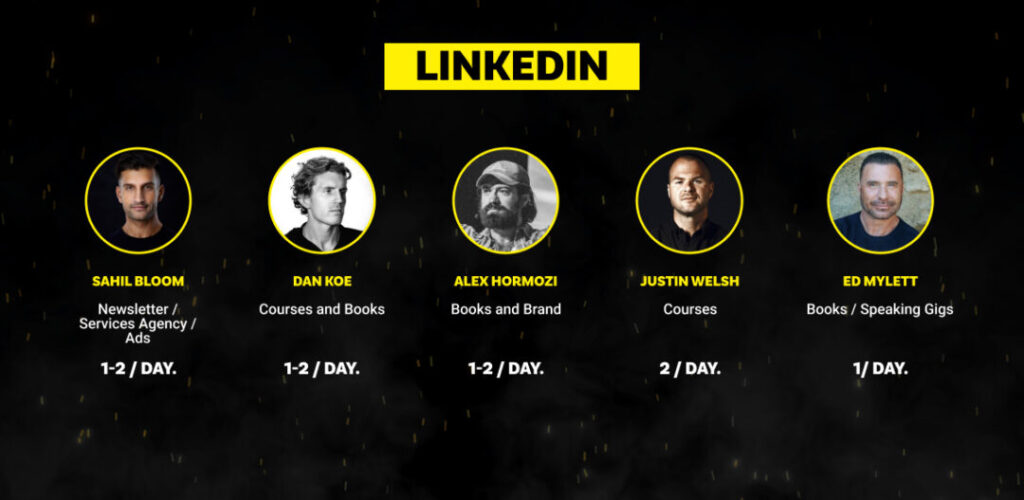
The sweet spot on LinkedIn seems to be 1-2 posts per day (around 150-250 words).
How often should I post on Instagram?

Most creators seem to post 1-2 times per day. These are a combination of normal posts, Reels, and carousels.
Insight 2: Repurposing long-form content is the key to making lots of content
After reading Insight 1, you’re probably wondering: “how on Earth am I supposed to make that much content?“
Every single one of the creators I analyzed uses a similar strategy: repurposing long-form content.
- Alex Hormozi: Alex Hormozi chops up clips from his long-form videos and interviews to create lots of YouTube Shorts and Instagram Reels. From a one-hour interview, Alex is able to make 10-20 pieces of short-form content.

- Dan Koe: Dan Koe writes books and long-form articles. He uses snippets from his books and articles as posts on Twitter. He then turns his most successful tweets into animations to share on Instagram.

- Justin Welsh: Justin Welsh uses a methodical process to turn one idea into a newsletter, a LinkedIn post, a long-form Tweet, and 6-10 short-form tweets. You can learn more about Justin Welsh’s solopreneur systems here.

This strategy is genius. You put the time and effort into creating a high-value piece of content, then you milk it to create content that will last you for weeks.
With AI tools like Revamped, you can very quickly turn any piece of long-form content into Tweets, LinkedIn Posts and Short-Form video scripts.
The best thing about Revamped is that you can even make original content from other people’s long-form content, saving countless hours of work.
Insight 3: Say one thing in 100 different ways (then say it again)
Each of the content creators that I researched has 3-4 key messages that they share again and again and again.
They learn the ideas and concepts that resonate with their audience, then they say it in 1,000 different ways.
- Sahil Bloom: Sahil’s key messaging includes the importance of (1) learning from others; (2) the need to balance success with appreciating the present; and (3) cultivating positive traits and relationships.
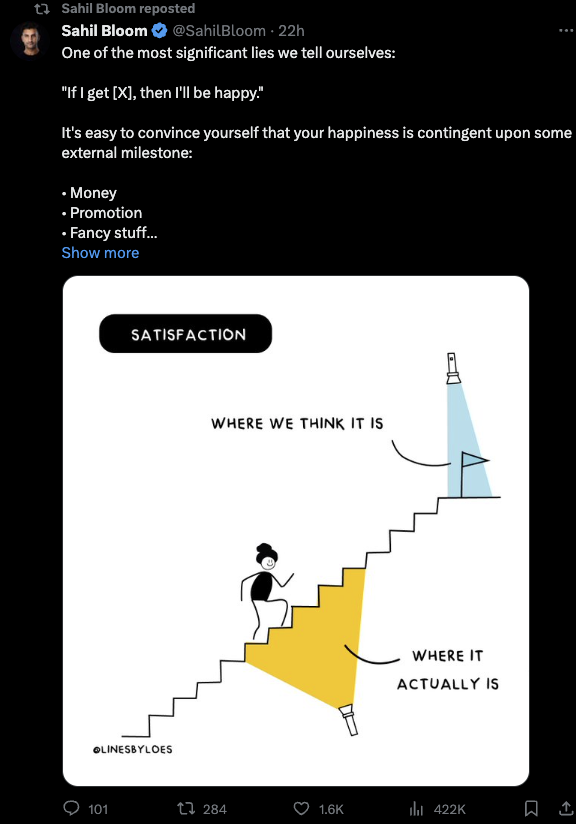
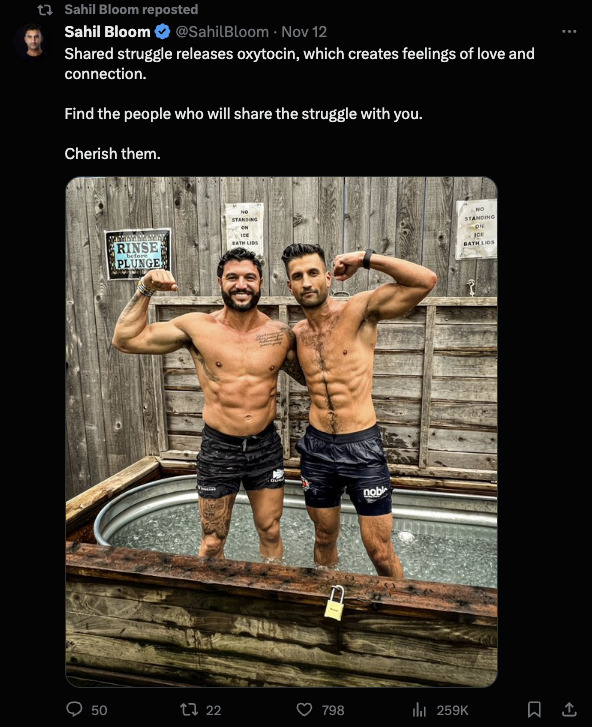
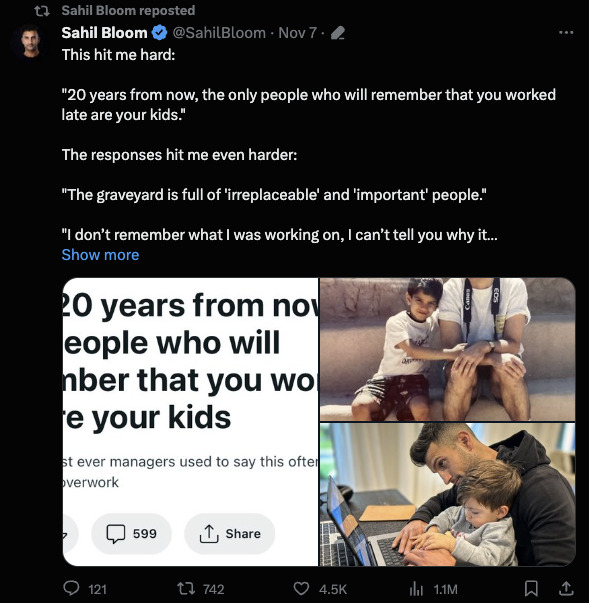
- Dan Koe: Dan Koe’s messaging includes the importance of (1) taking control of your life; and (2) developing habits that contribute to overall growth.
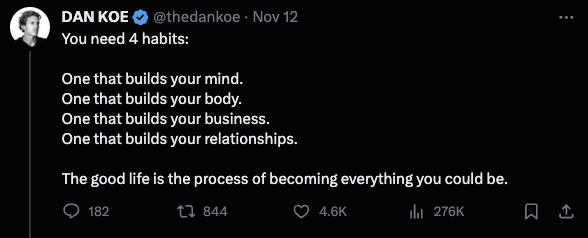

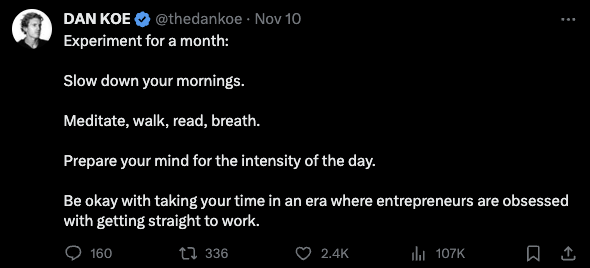
- Alex Hormozi: Alex’s key messages include the importance of (1) action and execution over planning and delay; (2) authentic success over fake fame; and (3) practical tactics that people can use to grow.



These creators have strong beliefs and opinions, and share them consistently. This consistent messaging creates a strong brand and an even stronger following of similar-minded people.
Your mission…
You now have two options. The first option is to forget this piece of content like all the other content you mindlessly consume.
Your second option is to take what you’ve learned and put it into action.
- Mission 1: Create a content schedule, and stick to it like your life depends on it. 2 Tweets per day on Twitter. 1 LinkedIn post per day. 1 Instagram post per day. 1 email per week.
- Mission 2: Create long-form content, and create a repurposing strategy that will allow you to milk it for all its worth.
- Mission 3: Identify 2-3 strong beliefs and opinions that you want to be known for. Then, make all your content related to your key messaging.
Do that, and you might just be the next creator I analyze for these articles.
Want to learn more about how you can grow your business with content?
To be the first to hear breakdowns like this, make sure you’re subscribed to the WGMI newsletter.


